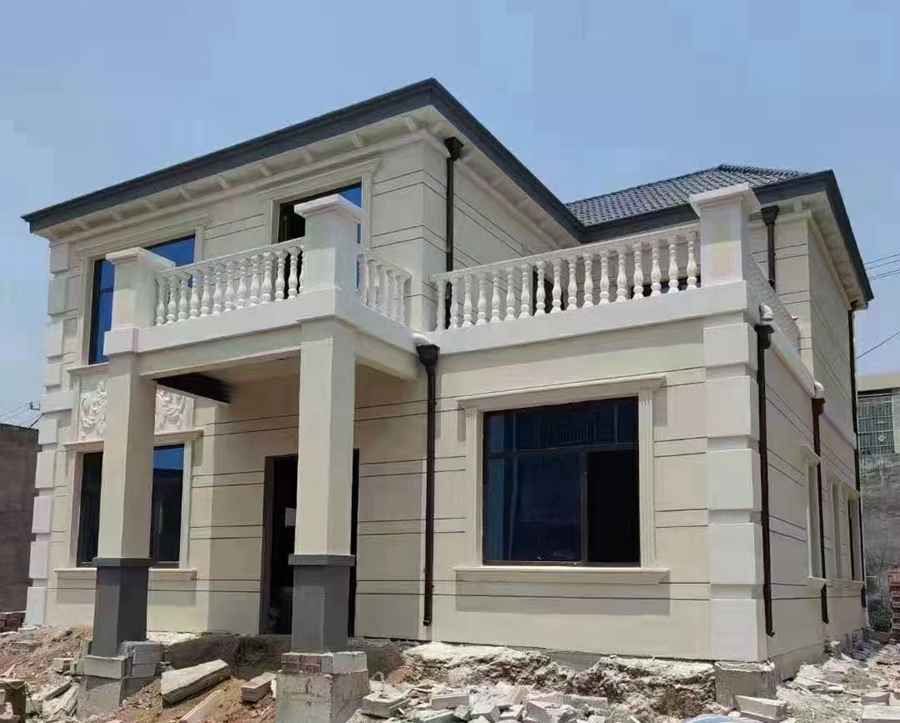Which is more environmentally friendly: light steel villas or concrete villas?
2024-07-30 20:49
In the field of construction, light steel villas and concrete villas are two common types of building methods. Each has its own set of advantages and disadvantages, and their environmental performance varies. To understand the environmental impact of these two building methods comprehensively, we can analyze them from multiple perspectives, including resource consumption, energy efficiency, lifecycle assessment, material reuse, and environmental impact.

1. Resource Consumption
1.1 Light Steel Villas
Light steel villas primarily use cold-formed thin-walled steel as the main structural material. Compared to traditional concrete and masonry materials, light steel is lighter and stronger. The production process of light steel consumes relatively less energy. Additionally, the manufacturing process of light steel can achieve precise cutting and assembly, reducing material waste. The faster construction speed of light steel frames also leads to lower resource consumption during the building process.
1.2 Concrete Villas
Concrete buildings primarily rely on materials such as cement, sand, gravel, and water. The production of cement is an energy-intensive and high-emission process. Each ton of cement produced releases a significant amount of carbon dioxide. The production and transportation of concrete involve high energy consumption, and the construction process for concrete buildings is generally longer, leading to higher resource consumption. The construction process often generates considerable waste and pollutants.
2. Energy Efficiency
2.1 Light Steel Villas
Light steel villas have good thermal insulation properties, often using insulation materials that significantly improve building energy efficiency, reducing the energy needed for heating in winter and cooling in summer. Additionally, the thinner walls of light steel villas can effectively reduce heat loss compared to traditional concrete buildings. However, light steel has a higher thermal conductivity, which may require additional insulation treatment to enhance energy efficiency.
2.2 Concrete Villas
Concrete buildings have excellent thermal mass, capable of storing and releasing heat effectively, which can improve building energy efficiency to some extent. The thick walls of concrete can effectively mitigate the impact of external temperature changes on the interior, especially in extreme climate conditions. However, concrete buildings typically have lower thermal insulation performance compared to modern light steel buildings, often requiring additional insulation layers to improve energy efficiency.
3. Lifecycle Assessment
3.1 Light Steel Villas
Lifecycle assessments of light steel buildings show that although the production and transportation of light steel consume some resources and energy, their long lifespan and lower maintenance requirements result in a smaller overall environmental impact. The recycling and reuse of light steel materials are relatively convenient, helping to reduce waste.
3.2 Concrete Villas
In lifecycle assessments of concrete buildings, the high energy consumption and emissions from cement production are significant environmental burdens. Additionally, concrete buildings require more energy for maintenance and stability over their lifetime. The disposal of concrete materials is challenging, and the processing of concrete waste can have environmental impacts.
4. Material Reuse and Environmental Impact
4.1 Light Steel Villas
The recyclability of light steel materials is high. Light steel can be disassembled, repaired, and reused, reducing the need for new materials. The waste management of light steel buildings is relatively straightforward, with minimal negative environmental impact.
4.2 Concrete Villas
Concrete materials are typically difficult to handle after disposal, especially those containing large amounts of steel reinforcement. While some technologies exist for recycling concrete, these are still developing. The production and use of concrete have significant long-term environmental impacts, particularly in terms of resource consumption and pollution.
5. Conclusion
Overall, light steel villas generally have a better environmental performance compared to concrete villas. Light steel villas consume fewer resources, have a faster construction speed, higher energy efficiency, and better material reuse and recycling properties. These advantages make light steel villas more environmentally friendly.
Concrete villas, while performing well in terms of thermal mass, have higher energy consumption and emissions during production and face challenges in waste handling. However, concrete buildings may be more stable in extreme climate conditions.
When choosing building materials, it is essential to consider not only their environmental performance but also cost, functional requirements, and local climate conditions. Making the most suitable decision involves balancing these factors to achieve the best overall outcome.



